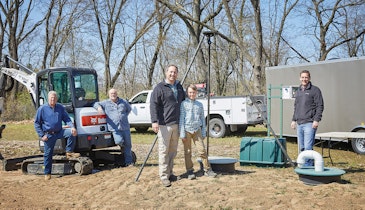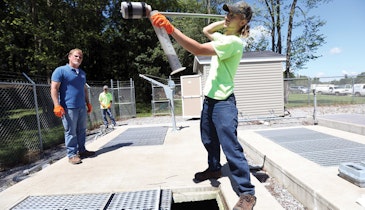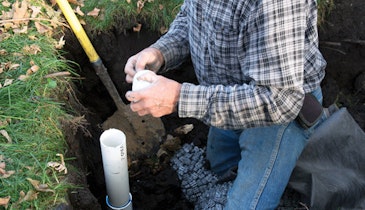Farm Island sits in Farm Island Lake north of Minneapolis, where most installation work stops during the winter. When Septic Check of Milaca, Minnesota, was contracted to design and install a new onsite system for a 1,400-square-foot year-round residential dwelling on the island, it took an unusual step by waiting for winter to enable transporting project materials over the frozen lake to the remote island site.
Why select an ATU?
Providing a suitable environment for microorganisms to treat wastewater is what ATUs are all about. These pre-engineered, advanced wastewater treatment systems are the best alternatives in small system designs that have space restrictions and no room for conventional treatment or where centralized sewerage is not available. ATUs are applied on sites with poor soils, shallow vertical separation distances to limiting conditions, and horizontal setback restrictions. Some systems can be designed for the treatment of high-strength wastewater or where total nitrogen removal is required.
System details
An ATU system was the ideal choice for this installation because Minnesota regulations require a minimum separation of three feet between a conventional system drainfield and the water table. By choosing an ATU and including a UV lamp, the required separation was reduced to 1 foot. The wastewater treatment system is 250 feet from the lakeshore. Wastewater exits the house via 12 feet of PVC pipe to the first of three Infiltrator IM-1060 1,000-gallon tanks, where settling and anaerobic treatment occurs. Wastewater then flows by gravity into the second tank where a Delta ECOPOD E50 ATU provides aerobic processing. It leaves the ECOPOD and flows by gravity through a SALCOR UV light to the last Infiltrator tank and is then pumped 65 feet through a 2-inch pipe to the absorption field.
The 585-square foot absorption field uses 200 linear feet of EZflow geosynthetic aggregate divided into three beds fed by a manifold of 2-inch pipe. Varying bed sizes maximized the small patch of good soil available on the 1-acre lot. The system is controlled by a Delta Treatment Systems control panel.
System installation
Septic Check used a snowplow truck to create a 3,400-foot-long road across the ice to the island. Equipment and supplies were driven across the frozen lake on a trailer and technicians commuted by snowmobile. An auger was used regularly to bore holes to check the thickness and quality of the ice and ensure safety. To prevent the soil from freezing prior to the early March installation, the site was covered with frost blankets the previous fall. Key to the installation success was daily clearing of all dirt piles to prevent overnight freezing.
Conclusion
Remote locations and site restrictions are ideal for using ATU treatment systems. The flexibility and ease of use make these systems an integral part of the wastewater infrastructure. When an ATU is designed properly, and installed and operated correctly, it will provide outstanding treatment for years to come.
Infiltrator Water Technologies is a leading manufacturer of products for the water and wastewater industries.
800-219-9183 | info@infiltratorwater.com | www.infiltratorwater.com





